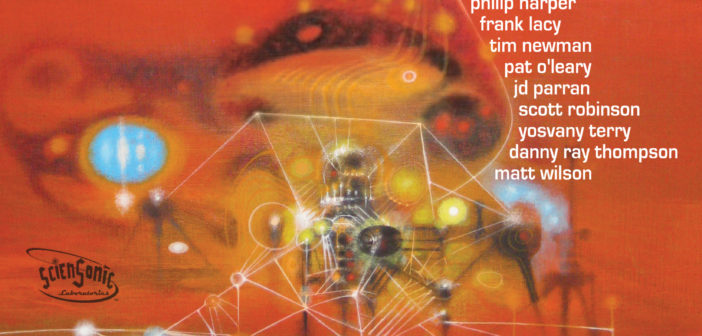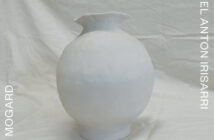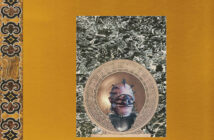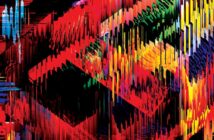I came to the world of Sun Ra relatively late in my musical appreciation. I first encountered the name when reading Kodwo Eshun’s still incredible book – ‘More Brilliant Than The Sun : Adventures In Sonic Fiction’ – as a cornerstone of afro-futurism. However, in those late-90s days, his music was not easy to come by in music shops and the internet had not yet quite opened up the entire scope of human musical recording for easy consumption. So I never got to hear the music. When I did start becoming immersed in jazz, in the early 2010s, my main entry point was the Ken Burns documentary series, ‘Jazz’. I discovered in retrospect that this particular vision of jazz felt that everything that happened once Miles Davis went electric was tainted and therefore not real, so jazz history kind of stops in about 1971. Of course, one of the main figures that pushed jazz into these no-go zones, beginning in the late 1950s, was Sun Ra and his multifarious ensembles, so he was not mentioned in Burns’ historical recount. So, again, our paths didn’t meet. It wasn’t until my regular reading of Wire magazine, where Sun Ra was continually name dropped by artists, in a wide range of genres, whose work I admired, that I figured I really needed to hear this stuff. Thankfully, by the middle of our current decade, rereleases had become relatively easy to track down and previously unreleased material also got regular airings on Record Store Day releases and the like. My collection of Sun Ra albums is now well into double digits, though this, of course, merely scratches the surface.
At 93, Marshall Allen now leads up the Sun Ra Arkestra in Sun Ra’s absence, still touring the world with an ever evolving version of the group. He is one of the key players on this new recording, alongside fellow Arkestra stalwart Danny Thompson and recording engineer, Richard Anderson, who was on duty in 1965 to commit to tape the sessions that would become the Heliocentric Worlds album. This was the album which brought the Sun Ra universe to the attention of a (relatively) more widespread audience and established the group and their leader’s reputation as forward moving jazz musicians for whom the universe was the limit as they broke the ground that would see them ignored by jazz traditionalists like Burns and his documentary accomplice, Wynton Marsalis. And Heliocentric Worlds is ostensibly the album which gives Heliosonic Toneways Vol. 1 its reason for existence. In a sense, this is a tribute album to Heliocentric Worlds. Thankfully, the forward looking ideology that powered the original means that the three main protagonists, along with a supporting cast of Frank Lacy (trombone), Philip Harper (trumpet), Pat O-Leary (bass), Yosvany Terry (saxophone), Tim Newman (bass trombone), JD Parran (bass clarinet) and Matt Wilson (drums), aren’t merely recreating but using the original as a launchpad for the inspiration of their new worlds.
For the completely uninitiated, this music has a genesis in big band jazz, but Sun Ra pushed that to outrageous extremes, taking in bop, modalism and free jazz along the way, without ever becoming any of those things. There is something distinctive about the Arkestra’s sound that moves beyond specific players. By the mid-60s, as it is here, it was largely improvised, though clearly directed with individual instruments given space in small groupings to make themselves clear. There is a sense of mid-20th century futurism in the timbres of the electronics interacting with the acoustic instruments. ‘Heliotone 3A’, in particular, starts out with globules of analogue synth – the kinds of sounds Sun Ra explored himself in the early to mid-70s – before developing into theremin like duets with clarinet, trumpet and flute. In places, the bubbling synth becomes almost indistinguishable from the bass trombone and bass clarinet, the players clearly bouncing ideas of each other while spiralling in and out of the more treble register instruments. Harper’s trumpet sometimes evokes Miles Davis’ blasts of high pitched puncture, while the calm interplays of the ensemble episodically evolve into short bursts of Ornette Coleman style free playing. And so the Arkestra’s legacy of floating around jazz touchpoints without ever becoming any of them is beautifully maintained by this new collective.
On listening to lots of Arkestra recordings, low fidelity becomes part of the sound, particularly in the earlier decades. Heliosonic Toneways Vol. 1, however, is recorded with incredible clarity. Each instrument is clear and present – the piano crosses the full stereo spectrum; clarinet and saxophone valves can be heard clicking as they are opened and closed, sometimes unbreathed; you can hear the sound of the plastic notes of the synthesiser as they are pressed up and down. Yet, in spite of all this up close intimacy, the group is still able to transcend the small space of the studio to create music that feels like it is moving space wards. The aid of some subtle reverbs and delays helps immensely. Richard Anderson claims it is the highest quality sound recording he has ever made and, though I can’t claim to be highly knowledgable of much of his engineering work, it would be hard to imagine a recording that would falsify his claim.
The highest compliment I could give the ensemble is that, for me, Heliosonic Toneways Vol. 1 fits seamlessly into the Arkestra catalogue. If I was told this was created by a 21st century incarnation of the group, I would happily accept this as fact. The spirit of that vast range of brilliant music that was created across all those decades is very present, but with a fidelity that surpasses anything I’ve heard in Sun Ra recordings. The key, though, is that this fidelity, unlike much ‘old’ music that is recorded anew, doesn’t neuter the spirit of the performances. Here they are as resonant, exploratory and restless as their inspiration was. Apparently, enough material was recorded in these sessions for a Vol. 2 to be forthcoming. I can’t wait.




